|
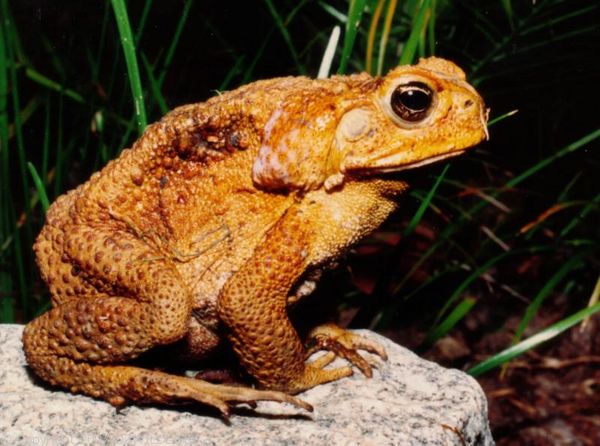
Cane Toad in suburban backyard. The Cane Toad is an introduced species well established throughout coastal Queensland, and is very common in Brisbane suburbs. You can see the poison glands on its shoulder in this picture. I have read that they can squirt poison up to a meter, but I have never seen that behavior even when they are handled.
Image by ozwildlife - Some rights reserved.
|
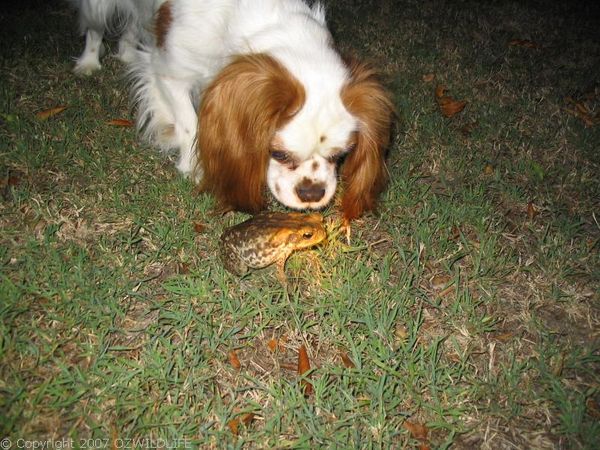
The dog likes to bark at Cane Toads, but has never tried to bite one.. The toad makes a hissing noise as it puffs up with air when the dog harasses it. A dog that bites a toad can be killed by the venom
Image by ozwildlife - Some rights reserved.
|
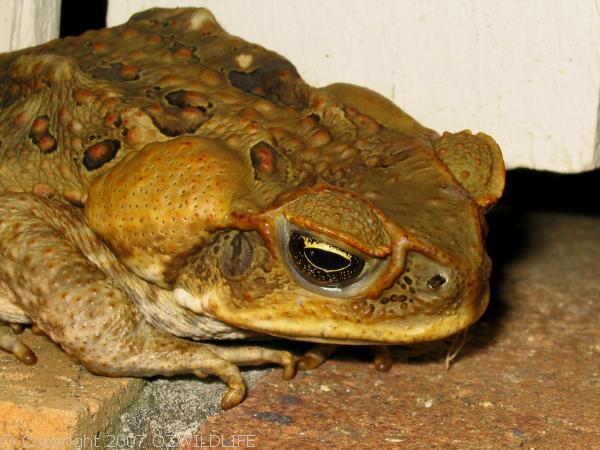
This close up was taken in a Brisbane garden.
Image by ozwildlife - Some rights reserved.
|
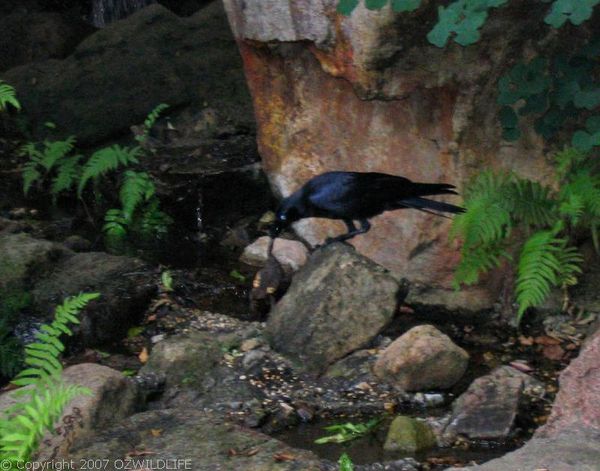
Many birds and animals that eat Cane Toads are poisoned by the toad's venom. The Cane Toad is suspected to be the cause of severe decline in numbers of several species of snakes. Even pets that eat Cane Toads can die as a result. The crow has figured out how to feed on Cane Toads and survive. It swings the toad around by the back leg until it overturns it, then feeds on the soft underside. This keeps it way from the poison glands on the toad's back. This photograph was taken in the Japanese Garden in Mt Coot-tha Botanic Gardens, Brisbane.
Image by ozwildlife - Some rights reserved.
|
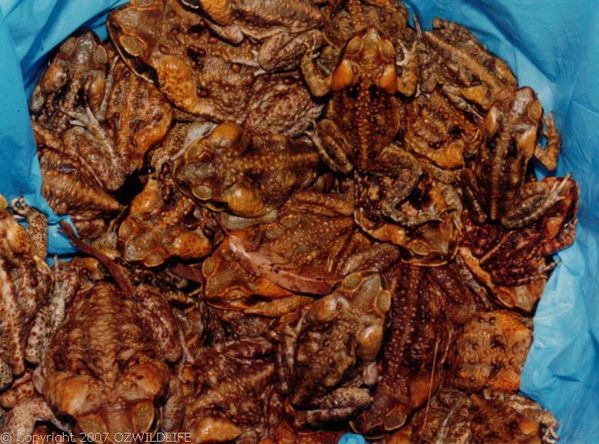
Cane Toads caught on a 'Toad-busting' night in Brisbane. Groups of people went on organised toad catching evenings, equipped with torches and rubber gloves to catch as many toads as they could. The captured toads were killed humanely by freezing.
Image by ozwildlife - Some rights reserved.
|
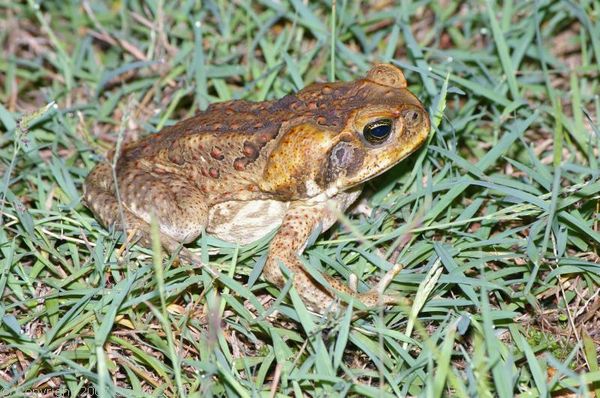
Cane Toad on lawn at night
Image by ozwildlife - Some rights reserved.
|
|
|
CANE TOAD FACTS |
Description
Cane Toads are large, stout amphibians with a dry and warty skin. Grey and olive brown above with pale belly with dark, irregular spots. The males make a low-pitched whirring sound when calling.
Cane toads have venomous glands, and can poison predators which attack them. This has caused a decline in numbers of numerous Australian snakes and mammals. The toads compete with native frogs for food and habitat and have seriously reduced numbers of many species.
Other Names
Marine Toad, Giant Toad
Size
Adults usually 10-15 cm long, but they can grow up to 23 cm.
Habitat
forest, woodland, suburban gardens - anywhere there is enough water to breed.
Food
insects, small lizards, other small frogs
Breeding
They breed in still or slow-flowing water. Spawn is long gelatinous strings with double rows of black eggs. Females lay 8,000 to 35,000 eggs at a time and usually breed twice a year. The eggs hatch in 48-72 hours into tadpoles. They develop into toadlets in between 17 days to 6 months depending on temperature. Cane toads need between 6 and 18 months to reach sexual maturity and have a lifespan of about 5 years.
Range
Cane toads were deliberately introduced to Australia from Hawaii in 1935 in an attempt to stop the Cane Beetle from destroying sugar cane crops in North Queensland. Cane Toads were released at Gordonvale in Queensland in 1935. They were unsuccessful in controlling the cane beetles. Since then, the cane toads have spread rapidly, throughout eastern Queensland, down into New South Wales and west into Northern Territory. West Australia is preparing to defend against the invasion.

Credits:
Map is from Atlas of Living Australia website at https://biocache.ala.org.au licensed under Creative Commons Attribution 3.0 License.
Notes
Sometimes dead dried toads are stuffed and sold as humorous figurines for the tourist trade.
Classification
| Class: | Amphibia | | Order: | Anura | | Family: | Bufonidae | | Genus: | Bufo | | Species: | marinus | | Common Name: | Cane Toad |
|
|

